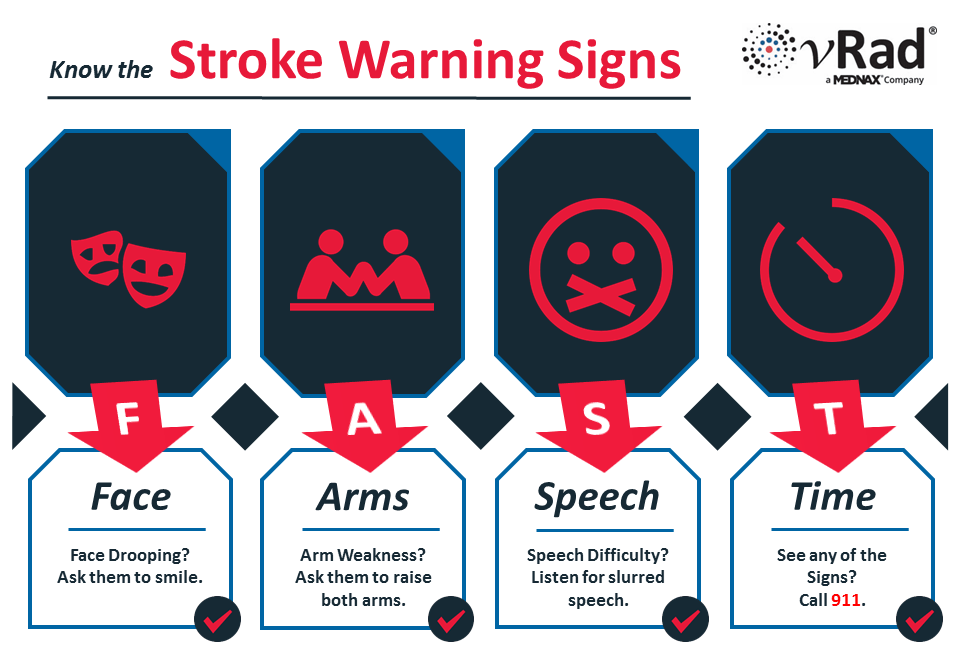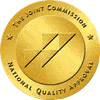May is both Stoke and Trauma awareness month. In recognition of this, we will be publishing a series of 3 posts covering:
- Stroke information and our impact;
- Trauma information and our impact;
- Critical relay times and the future of stroke and trauma treatment.
Each May, the American Stroke Association, the National Stroke Association and the National Institute of Neurological Disorders and Stroke (NINDS) work to promote stroke awareness. We’d like to take this opportunity to join them in raising awareness of stroke, and share the work that we do to support stroke centers and patients across the nation.
vRad is proud to provide radiology service to approximately 30% of the hospitals across the U.S. Our busiest times are the middle of night, weekends and holidays. If you or a loved one are exhibiting signs of a stroke in the middle of the night and rush to the closest emergency room – it’s very possible your Head CT scan is being read by a vRad board-certified radiologist.
A stroke can happen to anyone, at any age, and at any time. In fact, in the U.S., someone has a stroke every 40 seconds. It’s the fifth leading cause of death – yet up to 80 percent of strokes are preventable. With stroke treatment, every second counts – and the first step in treating stroke is to identify when a potential stroke is occurring. The most common method to quickly identify a potential stroke is the acronym FAST—which stands for FACE, ARMS, SPEECH and TIME—as shown below:

Here’s a downloadable copy you can share or print as a reminder.
What is a Stroke?
A stroke occurs when the blood supply to your brain is interrupted or reduced. This deprives your brain of oxygen and nutrients, which can cause your brain cells to die.
A stroke may be caused by a blocked artery (ischemic stroke) or the leaking or bursting of a blood vessel (hemorrhagic stroke). Some people may experience only a temporary disruption of blood flow to their brain (transient ischemic attack, or TIA).
What is a Stroke Protocol in Radiology?
A stroke protocol exam in radiology is the rapid response imaging of the CT Head to quickly diagnose and administer treatment.
Referred to as the “Golden Hour,” the first hour the patient begins exhibiting the signs and symptoms of a stroke is critical. The key concept to remember is the clock starts ticking as soon as signs and symptoms appear—not when you arrive at the stroke center or emergency department! If correctly diagnosed and treated quickly, the patient can fully recover, but delayed treatment can have dire consequences for patient outcomes. When caring for stroke patients Time is Brain!
Stroke Timeline Expectations:
- For Certified Stroke Centers, the target patient care timeline from when a stroke patient enters the hospital to the time the CT Results are received is 45 minutes.
- Since vRad isn’t involved until the scan is completed and the images are sent, we are left with 20 minutes at most to deliver critical findings to ensure best-possible patient care results.
vRad’s Impact on Stroke Patients Nationwide
As a trusted partner across hundreds of stroke centers nationwide, vRad has extraordinary performance expectations. To deliver on these expectations, vRad built an internal Stroke Protocol workflow that ensures the following:
- Urgency: Stroke studies are flagged with the highest urgency.
- Physician Access: The system immediately assigns the study to every privileged radiologist – with a requirement to be read next.
- Critical findings: We automatically trigger our outbound dialer to call the referring physician the moment a critical finding is detected.
Since 2012, vRad’s Average Stroke Protocol Turn-Around-Time (TAT) for CT Head = 6.73 minutes.
- vRad TAT = Time from vRad receiving the patient exam to the completed report being distributed back to the facility.
In 2015, we extended access to our “Stroke Protocol” urgency to all facilities (not just stroke centers) to ensure the standard of care across rural facilities was escalated and expedited for any patients suspected of stroke. Treating a patient within the “Golden Hour” is critical.
Within one year of extending the Stroke Protocol urgency to all facilities, we increased the number of stroke patients we cared for by over 2,000 per month and continue to demonstrate excellent TAT results.
2016 Stroke Protocol Performance Highlights
vRad Stroke Protocol is available for CT Head and CTA Head and Neck exams.
- vRad Completed: 67,000 Stroke Protocols
- ~5,583 Stroke Protocols per Month
- ~184 Stroke Protocol Patients per Day
- Average turnaround time (TAT) for CT Head = 6.53 mins
Improving our internal protocols and client partnerships is a passion across our Operations Team, and vRad as a whole. Cross-functional collaboration allows us to define and understand complex problems and implement effective solutions. In the case of stroke protocol, we continue to challenge ourselves to further improve the rapid delivery of exceptional patient care.
Next week we’ll be discussing our Trauma Protocol in honor of Trauma Awareness Month – stay tuned!
Joe Schmugge
About the Author





